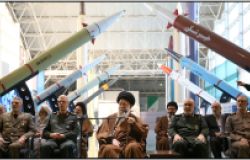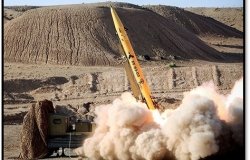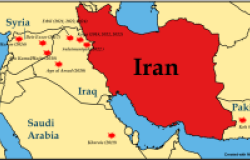204. Subregional Security Arrangements in Central and Southeastern Europe
Not long ago, subregional frameworks of cooperation were perceived, due to their "soft" security issue approach, as "the Cinderellas of European security." However, throughout the last couple of years, there has been a growing awareness, both politically and institutionally, of the value of these groupings. Consequently, subregional arrangements have begun to gain their rightful place within the new evolving, institutionally comprehensive and complementary European security architecture. Currently, there is a plethora of cooperative arrangements in Central and Southeastern Europe, including the Visegrad Group, the Central European Free Trade Agreement, the Central European Initiative, the Council of the Baltic Sea States, the Black Sea Economic Cooperation, the Royaumont Process, the South-East European Cooperation Agreement, the Southeast European Cooperative Initiative, and the Stability Pact for South-East Europe, as well as a number of trilateral arrangements (between Romania, Poland, the Republic of Moldova, Bulgaria, Greece, Turkey, Hungary and Austria). Euroregions such as the Carpathian, Upper Prut, and Lower Danube as well as a number of multinational, multilateral, trilateral, and bilateral military units also exist.
Any acknowledgement of their tentatively significant roles in the European security model for the 21st century should begin by recognizing these cooperative arrangements' inherent limits:
- They are not capable of providing "hard" security guarantees, hence, they are unable to substitute for integration into collective defense alliances such as NATO or WEU
- They cannot achieve or take the place of the integrated single market attainable in the EU. Therefore, they are not alternatives to the European integration process
- None of these arrangements can fully overcome disagreements over minority rights issues, national, ethnic, territorial or cultural cleavages, alignments and conflicts
- The bulk of these cooperative efforts are informal and poorly institutionalized
- Their overall efficiency is often indicated by the level of their least developed member
These groupings however also have a number of noteworthy assets. Due to their mere existence and ability to address "soft" and even "explicit" security issues, these subregional frameworks of cooperation convey a positive addition to European security. Due to an inherent common belief shared by all the participating states in the need for dialogue, cooperation, and mutual understanding and their view of themselves as co-sharers of communal elements, these subregional arrangements are confidence-building and security-enhancing instruments. This latter component is particularly valuable for cases in which cooperative efforts involve countries whose bilateral relationships are colored by "bad" legacies of the past or resentment of varying levels of progress. The pragmatic issues on which these groupings usually focus - i.e., investment promotion, trade liberalization, private sector support, transportation, telecommunications, environmental protection, natural resources management, cultural and educational exchanges, tourism, border crossing facilitation, etc. -have implicit confidence-building and stabilizing outcomes. Furthermore, these subregional frameworks are well-suited to address "new threats" or security challenges such as terrorism, organized crime, drugs and arms illegal trafficking, humanitarian aid in cases of natural and man-made accidents, unhindered migration, minority issues, cooperative frontier management, as well as "softer" arms control measures, chiefly in the area of transparency. The value of these subregional structures lies in complementing the efforts of international organizations in dealing with transnational threats.
There is a complex, interconnection between the subregional framework and the larger process of integration. Subregional frameworks not only do not necessarily conflict with the enlargement process but could actually help participating states prepare for NATO and EU integration processes "by laying stronger economic and social foundations for integration through the adoption of required organizational norms and standards before actual acceptance into these institutions." As instruments of liberalization, these cooperative arrangements are particularly important for countries which are currently in transition to market economies. For integration and subregional processes to really complement each other, "the integrated organizations should make clear that a good record of cooperation at the subregional level will help, not handicap, states which otherwise meet the conditions for membership." In the security domain as well, subregional frameworks address seven out of twelve subject areas on which allies and partners consult in the framework of NATO's Euro-Atlantic Partnership Council (EAPC). These include issues such as soft arms control, international terrorism, the security impact of economic developments, civil emergency and disaster preparedness, environmental security and scientific cooperation. Moreover, taking as an example the particular case of multinational units, these cooperative arrangements not only fit into the preventive defense concept, but are shaped to meet the requirements of NATO's adaptation process by advancing interoperability with NATO structures and helping to contribute to the "denationalization of defense" one of NATO's central aspirations from its inception.
Subregional cooperative arrangements also have a proven ability to act as a bridge between fault lines due to religious, cultural, and political traditions and orientations, as well as dissimilar levels of economic development and military strength. By focusing on practical, goal-oriented projects and defying such dividing lines among the participating states, these arrangements can cross geopolitical boundaries, bridge divides, overcome friction and misunderstanding between adjoining cultures and ethnic groups, and heal historical wounds. This capacity is of paramount importance to the current integration process. It allows NATO and EU members, aspirants, "neutrals" and non-candidates to continue meeting and talking to each other.
In theory, these cooperative agreements can also decrease center-periphery tensions and the sense of relative deprivation. This applies only to trans-border cooperative arrangements and it is particularly relevant in the case of the Euroregions. In accordance with Ted Robert Gurr's theory of relative deprivation, the expectations of citizens in countries undergoing modernization grow faster than the government can satisfy them, creating a sense of deprivation relative to the center and to neighboring countries. In his attempt to explain why secessionist movements occur and multiply in the post-Cold War environment, Mark N. Katz has extended Gurr's basically economic-oriented theory to the political realm, arguing that secessionism results from a relative sense of political deprivation. The contention here is that trans-frontier cooperative arrangements could diminish tensions arising out of a sense of relative economic and political deprivation provided that adjoining regions belonging to neighboring states with dissimilar levels of economic and political development are involved, and minorities, which are majorities in other states involved in cooperation, reside in them.
Moreover, these subregional connections cover all levels of possible cooperation, not only state to state, but also region to region, and people to people. By virtue of their frequently evolving, "bottom-up" participatory framework, these arrangements are able to complement the "top-down" approach realized through formal contacts between states, as well as fill the gap between the international, state-level and sub-state layers of contemporary international relations.
Despite this impressive list of assets and benefits, there are a number of circumstantial caveats which should also be mentioned. There is a visible difference between NATO members, NATO aspirants, and "neutrals" and their interest in and commitment to these groupings. Broadly speaking, countries which are full NATO and/or EU members, or those who have begun EU accession negotiations, tend to ascribe less importance to subregional arrangements. "Neutrals" and countries that have no immediate prospects or intention to join the Euro-Atlantic organizations tend to view subregional arrangements more seriously.
Furthermore, different subregional arrangements have varying impacts upon the security environment. As a rule, predominantly non-military-oriented groupings such as the Council of the Baltic Sea States (CBSS), the Central European Initiative (CEI), and the Central European Free Trade Agreement (CEFTA) have only an indirect impact on security. By contrast, multinational military units, including multilateral ones such as the Multinational Peace Force Southeast Europe/South-Eastern Europe Brigade (MPFSEE/SEEBRIG), the Black Sea Force (BLACKSEAFOR), and the Central European Nations Cooperation (CENCOOP); trilateral ones such as the Baltic Battalion (BALTBAT), the Baltic Naval Squadron (BALTRON), the Italian-Slovenian-Hungarian Land Force, the Romanian-Hungarian-Ukrainian Engineering Unit, and the Romanian-Moldavian-Ukrainian Unit; as well as bilateral ones such as the Polish-Ukrainian Battalion, the Romanian-Hungarian Battalion , and the Romanian-Ukrainian Battalion, have a more direct or potentially direct impact on the security environment. Occasionally, predominantly economic and infrastructure-oriented groupings developed over time a more traditional security dimension. Prime examples are the SECI Regional Center for Combating Trans-Border Crime in Bucharest and the South-East European Defense Ministerial (SEDM) process, autonomously developed within the Southeast European Cooperative Initiative and South-East European Cooperation Agreement, respectively. Overall, frameworks of cooperation which are not only comprehensive but also enjoy backing from major international organizations such as the Stability Pact for South-Eastern Europe and the Royaumont Process have better chances to fulfill their security objectives.
Subregional frameworks of cooperation are a relatively new phenomenon in international relations. Despite evolving in the late Cold War environment, subregional frameworks are beginning to demonstrate their full potential only now, in the post-Cold War era. Having as their foundations pragmatic, goal-oriented projects in a number of crucial fields, subregional frameworks of cooperation challenge existing and potential fault lines. They have a significant security role to play and this should be recognized and encouraged by larger Euro-Atlantic institutions. However, their overlapping characteristics in terms of membership, domains of cooperation and projects have a positive as well as a negative side, which has to be properly addressed and dealt with in the future if these frameworks are to have a positive impact on the regional security environment.
Adrian Pop spoke at an EES Discussion on April 25, 2000
About the Author
Adrian Pop
Read More
Global Europe Program
The Global Europe Program is focused on Europe’s capabilities, and how it engages on critical global issues. We investigate European approaches to critical global issues. We examine Europe’s relations with Russia and Eurasia, China and the Indo-Pacific, the Middle East and Africa. Our initiatives include “Ukraine in Europe” – an examination of what it will take to make Ukraine’s European future a reality. But we also examine the role of NATO, the European Union and the OSCE, Europe’s energy security, transatlantic trade disputes, and challenges to democracy. The Global Europe Program’s staff, scholars-in-residence, and Global Fellows participate in seminars, policy study groups, and international conferences to provide analytical recommendations to policy makers and the media. Read more










